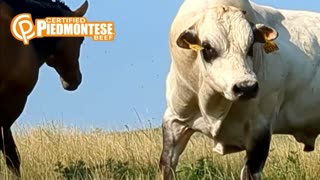Premium Only Content

Come on, come on, don't be greedy!
Come on, come on, don't be greedy! The cheetah (Acinonyx jubatus) is a large cat native to Africa and central Iran. It is the fastest land animal, estimated to be capable of running at 80 to 128 km/h (50 to 80 mph) with the fastest reliably recorded speeds being 93 and 98 km/h (58 and 61 mph), and as such has several adaptations for speed, including a light build, long thin legs and a long tail. It typically reaches 67–94 cm (26–37 in) at the shoulder, and the head-and-body length is between 1.1 and 1.5 m (3 ft 7 in and 4 ft 11 in). Adults weigh between 21 and 72 kg (46 and 159 lb). Its head is small and rounded, with a short snout and black tear-like facial streaks. The coat is typically tawny to creamy white or pale buff and is mostly covered with evenly spaced, solid black spots. Four subspecies are recognised.[3]
The cheetah lives in three main social groups: females and their cubs, male "coalitions", and solitary males. While females lead a nomadic life searching for prey in large home ranges, males are more sedentary and instead establish much smaller territories in areas with plentiful prey and access to females. The cheetah is active during the day, with peaks during dawn and dusk. It feeds on small- to medium-sized prey, mostly weighing under 40 kg (88 lb), and prefers medium-sized ungulates such as impala, springbok and Thomson's gazelles. The cheetah typically stalks its prey to within 60–70 m (200–230 ft), charges towards it, trips it during the chase and bites its throat to suffocate it to death. It breeds throughout the year. After a gestation of nearly three months, a litter of typically three or four cubs is born. Cheetah cubs are highly vulnerable to predation by other large carnivores such as hyenas and lions. They are weaned at around four months and are independent by around 20 months of age.
The cheetah occurs in a variety of habitats such as savannahs in the Serengeti, arid mountain ranges in the Sahara and hilly desert terrain in Iran. The cheetah is threatened by several factors such as habitat loss, conflict with humans, poaching and high susceptibility to diseases. Historically ranging throughout most of Sub-Saharan Africa and extending eastward into the Middle East and to central India, the cheetah is now distributed mainly in small, fragmented populations in central Iran and southern, eastern and northwestern Africa. In 2016, the global cheetah population was estimated at 7,100 individuals in the wild; it is listed as Vulnerable on the IUCN Red List. In the past, cheetahs were tamed and trained for hunting ungulates. They have been widely depicted in art, literature, advertising, and animation.
-
 11:07
11:07
Ken LaCorte: Elephants in Rooms
15 hours ago $0.63 earnedWhy Do Black Athletes Dominate?
12.5K9 -
 LIVE
LIVE
BEK TV
23 hours agoTrent Loos in the Morning - 9/24/2025
205 watching -
 LIVE
LIVE
The Bubba Army
22 hours agoCrying Kimmel Returns | Bubba the Love Sponge® Show | 9/24/2025
2,009 watching -
 46:08
46:08
ZeeeMedia
17 hours agoAutism: Vaccines vs. Tylenol, Parents Suing Open AI Speak Out | Daily Pulse Ep 113
30.3K32 -
 22:54
22:54
DeVory Darkins
1 day ago $16.05 earnedABC suffers fatal mistake brings Kimmel back on air as Trump makes shocking announcement
43.6K163 -
 19:04
19:04
putther
2 days ago $1.13 earnedTrolling a Level 7981 With My CHERNOBOG on GTA Online!
36.4K6 -
 26:17
26:17
Coin Stories with Natalie Brunell
21 hours agoInside Strive’s Bold Bitcoin Acquisition of Semler Scientific
41.8K2 -
 2:26:57
2:26:57
The Robert Scott Bell Show
21 hours agoTrump Autism Announcment, NYC Fluoride Ban, EMF Concerns, Kimmel Returns (Sort of), Plastics & Childhood Disease - The RSB Show 9-23-25
19.4K8 -
 9:33
9:33
Dr Disrespect
5 days agoDoc Goes PSYCHOTIC
143K17 -
 11:22
11:22
Nikko Ortiz
1 day agoExpensive Military Fails
22.6K5